Festinger cognitive dissonance 1957 citation information
Home » Trending » Festinger cognitive dissonance 1957 citation informationYour Festinger cognitive dissonance 1957 citation images are ready in this website. Festinger cognitive dissonance 1957 citation are a topic that is being searched for and liked by netizens today. You can Download the Festinger cognitive dissonance 1957 citation files here. Get all free images.
If you’re looking for festinger cognitive dissonance 1957 citation pictures information connected with to the festinger cognitive dissonance 1957 citation interest, you have pay a visit to the right site. Our site always provides you with suggestions for viewing the highest quality video and picture content, please kindly search and locate more informative video content and images that fit your interests.
Festinger Cognitive Dissonance 1957 Citation. (a) changing one or several involved elements in the dissonance relationship (e.g., moving an opinion to fit a behavior), (b) adding new elements to reduce the inconsistency (e.g., adopting opinions that fit a behavior), and (c) reducing. It holds that dissonance is experienced whenever one cognition that a person holds follows from the opposite of at least one other cognition that the person holds. A little more than 60 years ago, leon festinger published a theory of cognitive dissonance (1957). Access to society journal content varies across our titles.
 Motivation and emotion/Book/2018/Motivation to leave From en.wikiversity.org
Motivation and emotion/Book/2018/Motivation to leave From en.wikiversity.org
A theory of cognitive dissonance. A theory of cognitive dissonance. It has generated hundreds and hundreds of studies, from which much has been learned about the determinants of attitudes and beliefs, the internalization of values, the. Festinger�s (1957) cognitive dissonance theory suggests that we have an inner drive to hold all our attitudes and behavior in harmony and avoid disharmony (or dissonance). Has been cited by the following article: The magnitude of dissonance is directly proportional to the number of discrepant cognitions and.
Access to society journal content varies across our titles.
Festinger described that cognitive dissonance occurs whenever people are confronted with facts that contradict their beliefs, values, and ideas; They will thrive on finding a way to resolve the. (2) when dissonance is present, in addition to trying to reduce it, the person will actively avoid situations and information which would likely increase the dissonance” (festinger 1957, 3). If you have access to a journal via a society or association membership, please browse to your society journal, select an article to view, and follow the instructions in this box. Festinger�s (1957) cognitive dissonance theory suggests that we have an inner drive to hold all our attitudes and behavior in harmony and avoid disharmony (or dissonance). A theory of cognitive dissonance by leon festinger, 1957, row, peterson edition, in english.

Festinger�s (1957) cognitive dissonance theory suggests that we have an inner drive to hold all our attitudes and behavior in harmony and avoid disharmony (or dissonance). The magnitude of dissonance is directly proportional to the number of discrepant cognitions and. Representations of the future in depression—a qualitative study A theory of cognitive dissonance. Article citations more>> festinger, l.
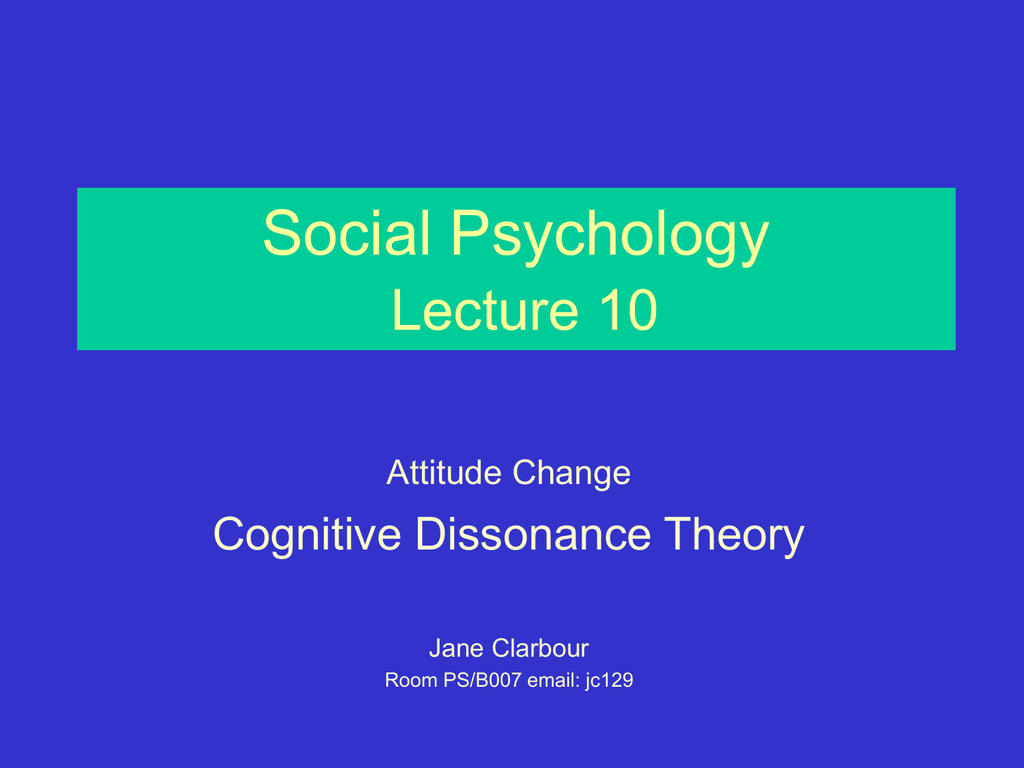 Source: studylib.net
Source: studylib.net
Festinger�s theory of cognitive dissonance has been one of the most influential theories in social psychology. A theory of cognitive dissonance. Consequently, the editors felt that an assessment of the current status of the theory would be of value and that there was a need for a book to present and. The theory of cognitive dissonance (festinger, 1957; Access to society journal content varies across our titles.
 Source: pinterest.com
Source: pinterest.com
Miller, clark, & jehle, 2015) postulates that humans permanently strive to maintain consistency among their different cognitions (beliefs. Article citations more>> festinger, l. For him, “two elements are in a dissonant relationship if, considering these two alone, the obverse of one element would follow from the other” (festinger 1957, 13). With that in mind a measurement instrument was developed using the personal ethical threshold (comer and vega, 2008). Leon festinger�s theory of cognitive dissonance has been widely recognized for its important and influential concepts in areas of motivation and social psychology.
 Source: slideshare.net
Source: slideshare.net
Festinger�s theory of cognitive dissonance has been one of the most influential theories in social psychology. A little more than 60 years ago, leon festinger published a theory of cognitive dissonance (1957). Festinger described that cognitive dissonance occurs whenever people are confronted with facts that contradict their beliefs, values, and ideas; Leon festinger�s theory of cognitive dissonance has been widely recognized for its important and influential concepts in areas of motivation and social psychology. This is known as the principle of cognitive consistency.
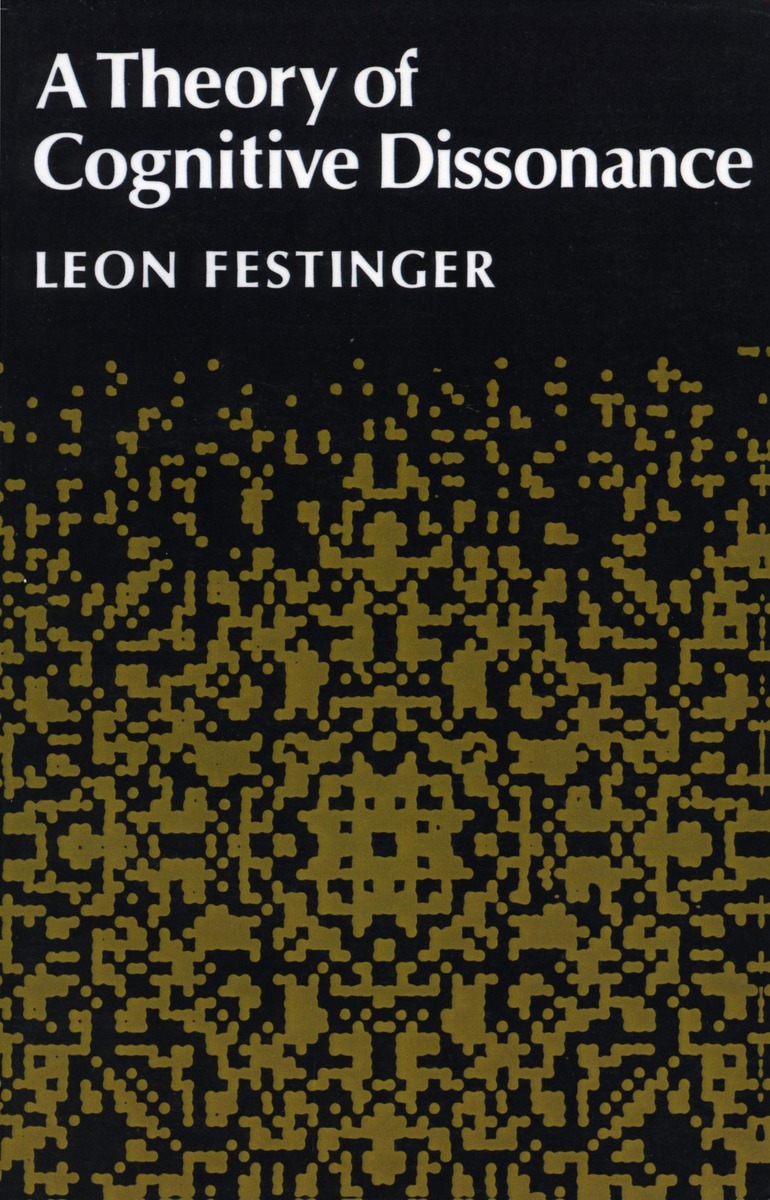 Source: sup.org
Source: sup.org
If you have access to a journal via a society or association membership, please browse to your society journal, select an article to view, and follow the instructions in this box. Inconsistent cognitions produce unpleasant states that motivate individuals to change one or more cognitions to restore consistency with other cognitions (i.e., consonance). A little more than 60 years ago, leon festinger published a theory of cognitive dissonance (1957). Representations of the future in depression—a qualitative study Consequently, the editors felt that an assessment of the current status of the theory would be of value and that there was a need for a book to present and.
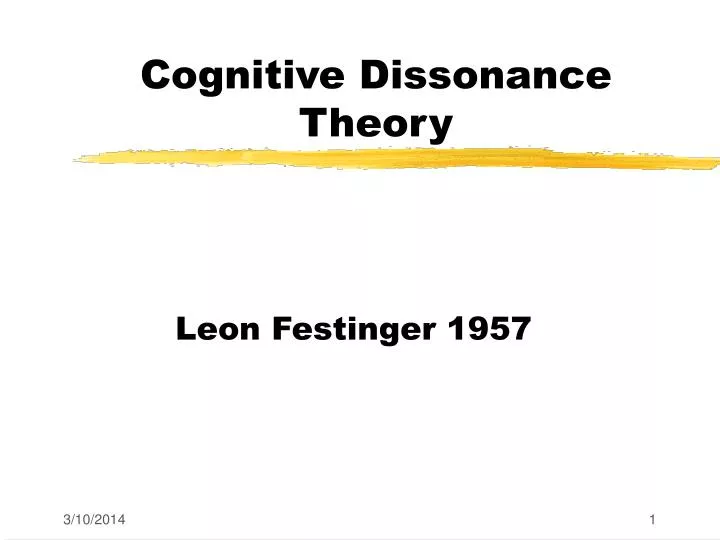 Source: slideserve.com
Source: slideserve.com
The theory of dissonance is here applied to the problem of why partial reward, delay of reward , and effort expenditure during training result in increased resistance to. Representations of the future in depression—a qualitative study Miller, clark, & jehle, 2015) postulates that humans permanently strive to maintain consistency among their different cognitions (beliefs. For him, “two elements are in a dissonant relationship if, considering these two alone, the obverse of one element would follow from the other” (festinger 1957, 13). Inconsistent cognitions produce unpleasant states that motivate individuals to change one or more cognitions to restore consistency with other cognitions (i.e., consonance).
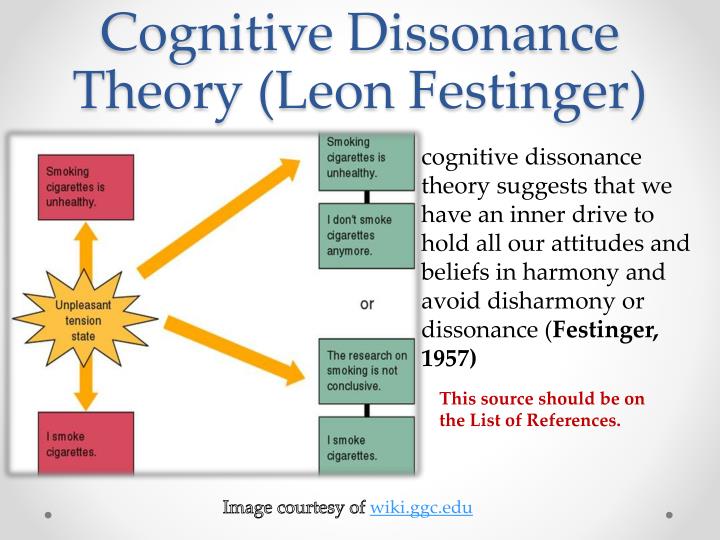 Source: slideserve.com
Source: slideserve.com
If you have access to a journal via a society or association membership, please browse to your society journal, select an article to view, and follow the instructions in this box. (2) when dissonance is present, in addition to trying to reduce it, the person will actively avoid situations and information which would likely increase the dissonance” (festinger 1957, 3). Access to society journal content varies across our titles. A theory of cognitive dissonance. Festinger described that cognitive dissonance occurs whenever people are confronted with facts that contradict their beliefs, values, and ideas;
 Source: casaruraldavina.com
Source: casaruraldavina.com
The theory of cognitive dissonance (festinger, 1957; The magnitude of dissonance is directly proportional to the number of discrepant cognitions and. 0ver 40 years after the publication of leon festinger�s (1957) book, a theory of cognitive dissonance, research on the theory is receiving renewed attention, and revisions to the original theory have been proposed. This is known as the principle of cognitive consistency. A theory of cognitive dissonance by leon festinger, 1957, row, peterson edition, in english.
 Source: researchgate.net
Source: researchgate.net
It holds that dissonance is experienced whenever one cognition that a person holds follows from the opposite of at least one other cognition that the person holds. Has been cited by the following article: Cognitive dissonance theory links actions and attitudes. For him, “two elements are in a dissonant relationship if, considering these two alone, the obverse of one element would follow from the other” (festinger 1957, 13). Festinger 1957 (cited under core historical sources) considers three ways to cope with cognitive dissonance:
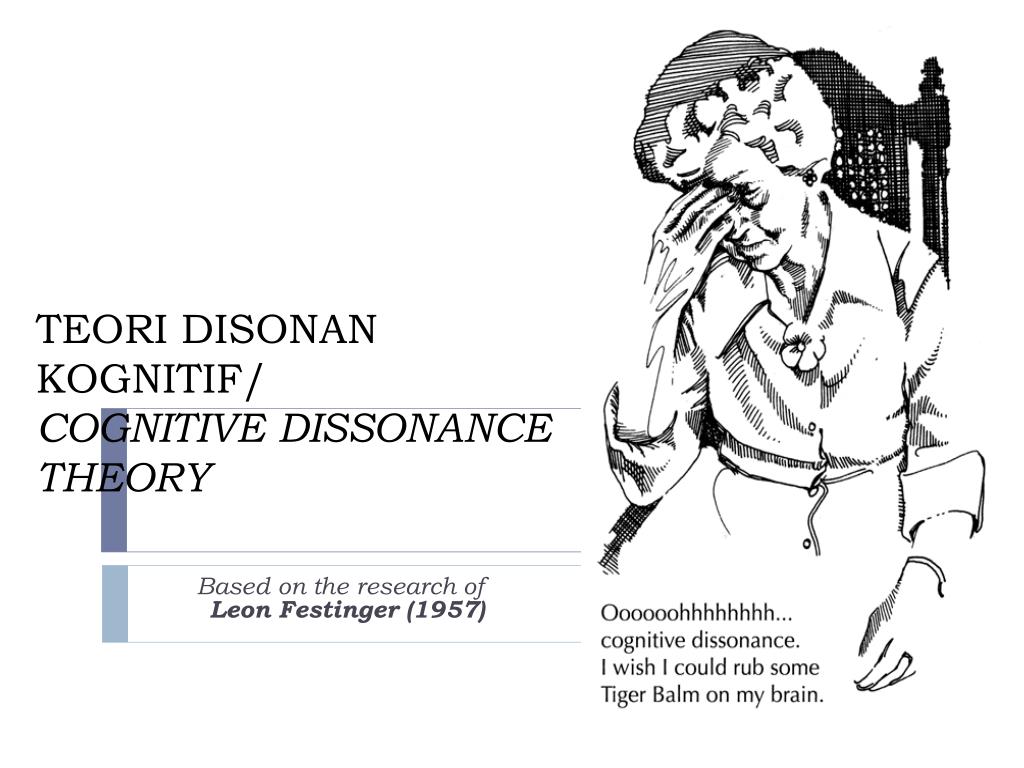 Source: slideserve.com
Source: slideserve.com
Festinger described that cognitive dissonance occurs whenever people are confronted with facts that contradict their beliefs, values, and ideas; The theory of cognitive dissonance (festinger, 1957; With that in mind a measurement instrument was developed using the personal ethical threshold (comer and vega, 2008). They will thrive on finding a way to resolve the. If you have access to a journal via a society or association membership, please browse to your society journal, select an article to view, and follow the instructions in this box.
 Source: researchgate.net
Source: researchgate.net
With that in mind a measurement instrument was developed using the personal ethical threshold (comer and vega, 2008). Consequently, the editors felt that an assessment of the current status of the theory would be of value and that there was a need for a book to present and. The theory of dissonance is here applied to the problem of why partial reward, delay of reward , and effort expenditure during training result in increased resistance to extinction. A theory of cognitive dissonance. Cognitive dissonance theory links actions and attitudes.
 Source: casaruraldavina.com
Source: casaruraldavina.com
The magnitude of dissonance is directly proportional to the number of discrepant cognitions and. It looks like you�re offline. A theory of cognitive dissonance. For him, “two elements are in a dissonant relationship if, considering these two alone, the obverse of one element would follow from the other” (festinger 1957, 13). A theory of cognitive dissonance.
 Source: researchgate.net
Source: researchgate.net
It has generated hundreds and hundreds of studies, from which much has been learned about the determinants of attitudes and beliefs, the internalization of values, the. A theory of cognitive dissonance. A theory of cognitive dissonance. This is known as the principle of cognitive consistency. If you have access to a journal via a society or association membership, please browse to your society journal, select an article to view, and follow the instructions in this box.

The theory of cognitive dissonance (festinger, 1957; The theory of cognitive dissonance (festinger, 1957; A theory of cognitive dissonance by leon festinger, 1957, row, peterson edition, in english. Access to society journal content varies across our titles. Representations of the future in depression—a qualitative study
 Source: semanticscholar.org
Source: semanticscholar.org
Article citations more>> festinger, l. It looks like you�re offline. Representations of the future in depression—a qualitative study Cognitive dissonance theory links actions and attitudes. Inconsistent cognitions produce unpleasant states that motivate individuals to change one or more cognitions to restore consistency with other cognitions (i.e., consonance).
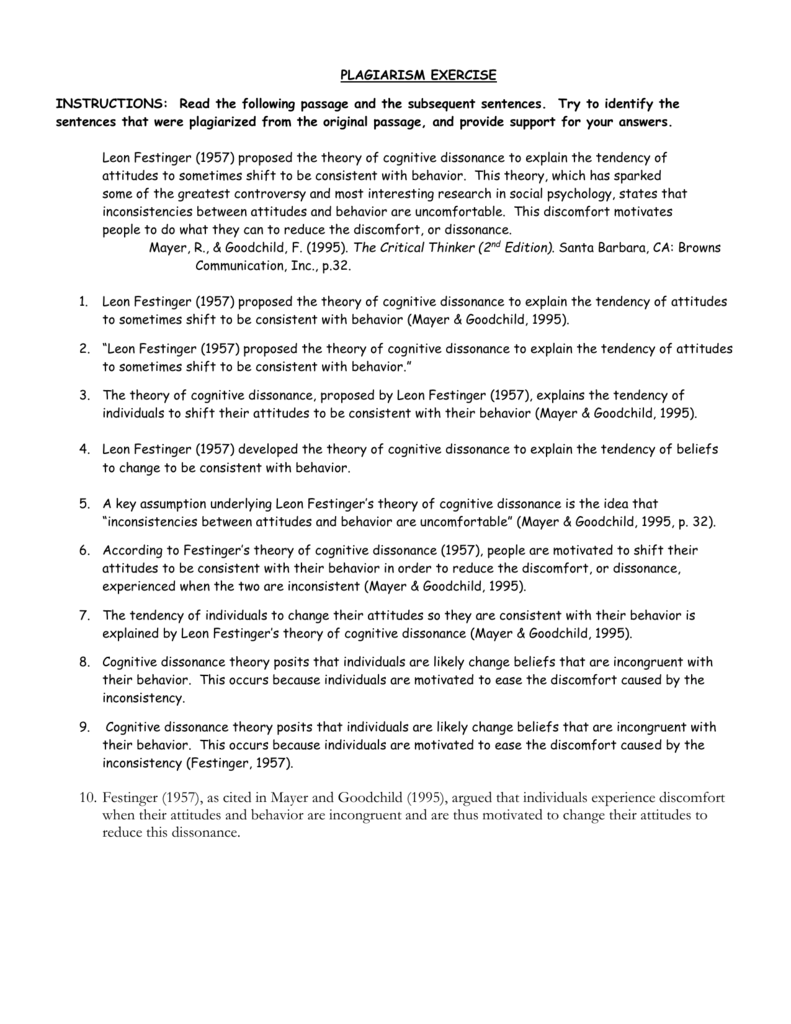 Source: studylib.net
Source: studylib.net
A theory of cognitive dissonance. A theory of cognitive dissonance. The theory of dissonance is here applied to the problem of why partial reward, delay of reward , and effort expenditure during training result in increased resistance to extinction. Has been cited by the following article: It has generated hundreds and hundreds of studies, from which much has been learned about the determinants of attitudes and beliefs, the internalization of values, the.

Article citations more>> festinger, l. It holds that dissonance is experienced whenever one cognition that a person holds follows from the opposite of at least one other cognition that the person holds. A theory of cognitive dissonance. Access to society journal content varies across our titles. Article citations more>> festinger, l.
 Source: en.wikiversity.org
Source: en.wikiversity.org
A theory of cognitive dissonance. Inconsistent cognitions produce unpleasant states that motivate individuals to change one or more cognitions to restore consistency with other cognitions (i.e., consonance). A theory of cognitive dissonance. If you have access to a journal via a society or association membership, please browse to your society journal, select an article to view, and follow the instructions in this box. Festinger�s theory of cognitive dissonance has been one of the most influential theories in social psychology.
This site is an open community for users to do submittion their favorite wallpapers on the internet, all images or pictures in this website are for personal wallpaper use only, it is stricly prohibited to use this wallpaper for commercial purposes, if you are the author and find this image is shared without your permission, please kindly raise a DMCA report to Us.
If you find this site value, please support us by sharing this posts to your own social media accounts like Facebook, Instagram and so on or you can also bookmark this blog page with the title festinger cognitive dissonance 1957 citation by using Ctrl + D for devices a laptop with a Windows operating system or Command + D for laptops with an Apple operating system. If you use a smartphone, you can also use the drawer menu of the browser you are using. Whether it’s a Windows, Mac, iOS or Android operating system, you will still be able to bookmark this website.
Category
Related By Category
- Easybib chicago citation information
- Doi to apa citation machine information
- Citation x poh information
- Cpl kyle carpenter medal of honor citation information
- Goethe citation dieu information
- Exact citation apa information
- Citation une impatience information
- Fitzgerald way out there blue citation information
- Contre le racisme citation information
- Friedrich nietzsche citaat grot information